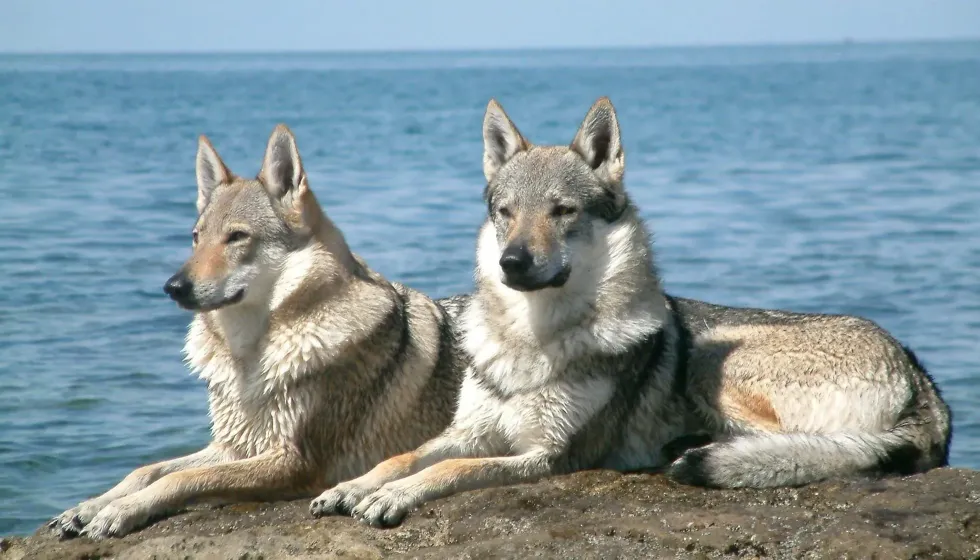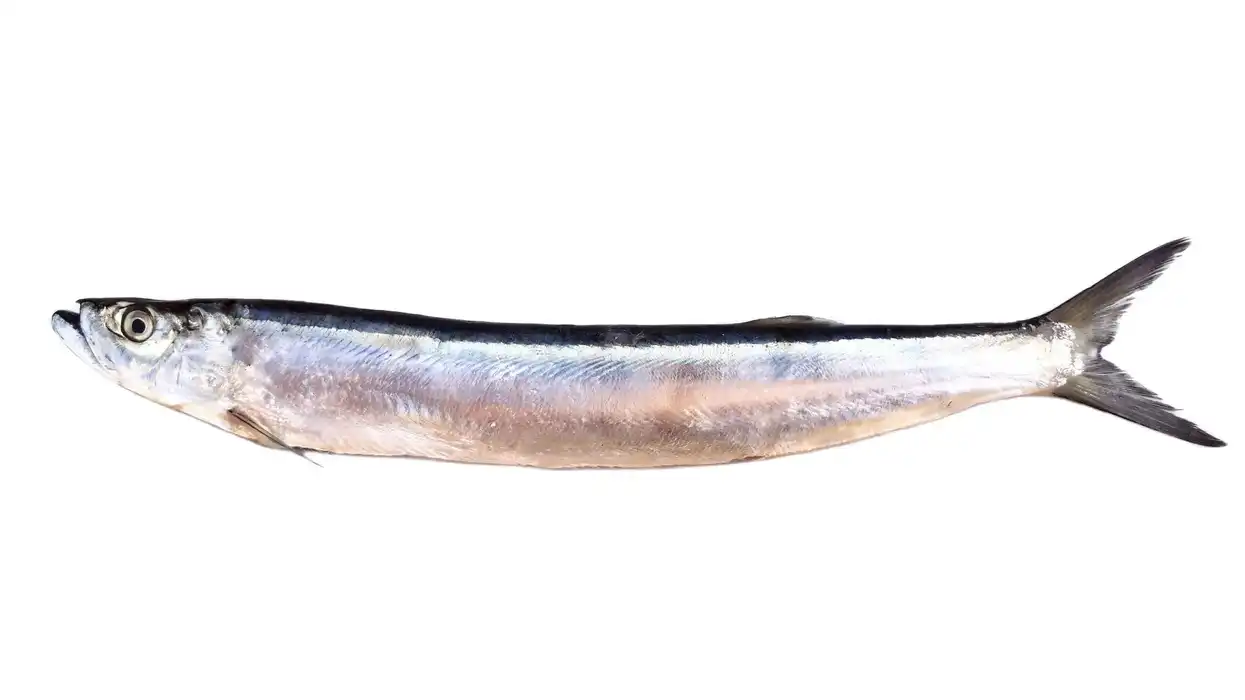Ever heard of a dog breed that looks like a wolf? Then you must be familiar with a Czechoslovakian Vlcak.
The Czechoslovakian wolfdog breed is a type of canine that has a half wolf and half canine appearance. These dogs were initially bred to be kept as military dogs. Its parents are the German Shepherd dog and the Carpathian wolf.
The Czechoslovakian wolfdog was named the national dog of Czechoslovakia in 1982. While they are essentially a working canine, they are likewise getting increasingly well known as a buddy canine because of their dependability and capacity to adore!
The Czechoslovakian wolfdog is fierce looking, their spine is straight, and strong with movement, along with having a short loin. Their chest is large and flat rather than barrel-shaped.
Their belly is strong and drawn in and their back is short and slightly sloped, their tail is high set, and when freely lowered reaches the tarsi. The Czechoslovakian wolfdog breed is full of interesting facts, and this article will provide you with all the fun facts about a Czechoslovakian wolfdog wolves.
So, without wasting any time, let's begin. After, do check our other articles on Kunming wolfdog and Tamaskan as well.
Czechoslovakian Wolfdog Interesting Facts
What type of animal is a Czechoslovakian wolfdog?
This huge and noticeable dog has both the form and look of a wolf, it is part of the Canidae family. They have a rectangular body outline, short upstanding ears, and diagonally set golden eyes.
Their teeth and jaws are solid and shaped like a scissor. The Czechoslovakian wolfdog has a straight and solid spine with a short midsection and thick neck.
Their chest is leveled and enormous. They have a short and somewhat slanted back, combined with a thick, high set tail. The forelimbs are straight and thin and end up in enormous paws.
The rear calves are long and strong. The color of the coat can be yellow-dim or silver-dark with a light cover and a dark gag.
What class of animal does a Czechoslovakian wolfdog belong to?
The Czechoslovakian wolfdog belongs to the Mammal class just like any other dog breed. In the year 1965, a plan was created for breeding this new breed with combined qualities of the wolf along with the favorable qualities of the dog.
For this purpose, Carpathian wolves were bred with German shepherd dogs. In the year 1982, in the former Czechoslovakian Republic, this breed was recognized as a national breed.
How many Czechoslovakian wolfdogs are there in the world?
The Czechoslovakian wolfdog is a common and widely found dog breed. Currently, there are 24,982 registered Czechoslovakian wolfdogs present in the world.
Where does a Czechoslovakian wolfdog live?
The Czechoslovakian wolfdog is best suited for a wintery place, but they are well known for their ability to easily adapt to other climates and surroundings as well.
What is a Czechoslovakian wolfdog's habitat?
There is no special habitat requirement for the Czechoslovakian wolfdog. The Czechoslovakian wolf sub-species can easily live with humans and related surroundings. They were bred mainly to live with humans as protectors and as military dogs. Their temperament allows them to live anywhere. Their high energy levels can be managed through proper training and mental stimulation.
Who do Czechoslovakian wolfdogs live with?
The Czechoslovakian wolfdog dog breeds can live well along with their kinds, but they also love to socialize with human beings as their parent breeds were also fun-loving and loyal to human beings.
How long does a Czechoslovakian wolfdog live?
The Czechoslovakian wolfdog has a moderately long daily routine, and the average lifespan of this breed is somewhere in the range of 12-16 years if proper training and mental stimulation is provided to these dogs.
How do they reproduce?
The Czechoslovakian wolfdog reproduces through sexual reproduction, which means that the sperms released by the male counterpart need to be fused with the eggs produced by the female. If the fusion is successful, then the egg gets fertilized, and offspring are produced.
The female Czechoslovakian wolfdog can give birth to 6-7 puppies and the average gestation period ranged between 57-63 days.
What is their conservation status?
Due to their abundant presence, the Czechoslovakian wolfdogs are categorized under the Least Concerned category as their conservation status.
Czechoslovakian Wolfdog Fun Facts
What do Czechoslovakian wolfdogs look like?
Czechoslovakian Vlcak dogs have a striking resemblance to that of a wolf as they have a similar wolf body and look. Their body is rectangular and fairly tall.
Their ears are long and set in an upright way. Their teeth are known to be very sharp and solid that helps them to bite substantial prey.
The forelimbs are straight and narrow-set, with the paws slightly turned out, with a long radius and metacarpus. The hind limbs are muscular, with a long calf and instep. The coat color is yellow-grey to silver-grey, with a light mask.
The hair is straight, close, and very thick. The Czechoslovakian wolfdog is a typical tenacious canterer; its movement is light and harmonious, and its stride is long.

How cute are they?
Czechoslovakian Vlcak dogs are very cute and attractive too. They look like strong military dogs. Due to their strong looks and solid-built body, they are mainly used as working dogs and guard dogs. It can be regarded as one of the cutest looking dog breeds.
How do they communicate?
Czechoslovakian wolfdogs are known to share similar communication methods like all other dogs and wolves. They howl and pretend to bow when they are in the mood to play or run around. These dogs run around wagging their tails and chase each other.
How big is a Czechoslovakian wolfdog?
Czechoslovakian wolfdog has a beautiful wolf-like appearance which makes them look like well-built Carpathian wolves. A Czechoslovakian wolfdog is 25-27 in tall, which means that this breed of dog is almost three times bigger than the Chihuahua dog.
How fast can a Czechoslovakian wolfdog run?
Czechoslovakian wolfdogs can run fast and are perfect for the military purpose of search teams. These dogs can run at a speed of 62 miles per hour. They are very strong and big-sized dogs that live up to their name and can hunt their prey with ease.
How much does a Czechoslovakian wolfdog weigh?
The males weigh more than females, and their thick fur contributes a lot to their overall weight. The average weight of Czechoslovakian wolfdogs is 72.5 lb. The females are less in weight which might change accordingly during pregnancy. The average weight of a female Czechoslovakian wolfdog is 67.0 lbs.
What are their male and female names of the species?
The male Czechoslovakian wolfdog will be called a dog, and female Czechoslovakian wolfdogs will be called a bitch.
What would you call a baby Czechoslovakian wolfdog?
The baby Czechoslovakian wolfdogs are commonly called puppies.
What do they eat?
Czechoslovakian wolfdog diet consists of a lot of protein and other essential nutrients, particularly crude food like crude meat and bones.
During their puppyhood, they are to be served food three times every day, and when they grow up, they are to be given two meals in a day so they do not become overweight, which can cause health issues for them later on.
Are they slobbery?
Czechoslovakian wolfdogs are not very slobbery. This depends upon the situation though. Sometimes in order to keep themselves from having a dry tongue, they can salivate more in hot areas. Special care should be given to such large dogs.
Would they make a good pet?
For Czechoslovakian wolfdogs, living with a family implies committing a great deal of time to prepare and mingle with them. As a wolf mixture, the Czech Wolfdogs is a high-hazard breed, and it can be a bit challenging to keep this breed as a pet.
It's important for these canines to realize how to act in homegrown and public settings.
And on account of the Czechoslovakian wolfdog size and force, they don't do well in homes with small kids or different creatures. So, if you have small kids in your home then this dog might not be suitable for you.
Did you know...
Consent is usually required in the UK from the nearby board to claim the Czech canine since it is registered under the Perilous Wild Animals permit.
Like other wolf canines, they can remain without nourishment for 2-3 days.
In 1982 it was perceived as a public variety in Czechoslovakia. Their creation was a biological experiment. This variety was reproduced from a German Shepherd and Carpathian Wolf.
Since female wolves just have one warmth yearly, most wolfdog puppies give birth during winters.
Their parent breeds are well-known for their apparent eyesight.
The Czechoslovakian wolfdog price can be between $800-$1,200. The Czechoslovakian wolfdog cost varies and depends on various factors. These factors include the age, weight, and size of the dog. Having such dogs at the house will normally cost more due to the amount of food it intakes.
How healthy are Czechoslovakian wolfdogs?
Czechoslovakian wolfdogs are healthy, but like any other dogs and animals, they are vulnerable to various types of diseases.
Hip dysplasia happens when the ball-and-attachment joint at the hip doesn't shape accurately. This causes the highest point of the thigh hangs freely in the attachment. Hip dysplasia is normal in numerous bigger canine varieties, including German Shepherds. Along these lines, Czech Wolfdogs acquired this from their German Shepherd family members.
Like hip dysplasia, elbow dysplasia is the off-base development of a joint, that is, the elbow joint. It can prompt weakness and joint inflammation.
A few elements can cause elbow dysplasia. Yet, hereditary qualities are the essential cause for this. Similarly, as with hip dysplasia, German Shepherd canines have given their unfortunate qualities to Czechoslovakian wolfdogs.
Degenerative Myelopathy is a reformist decay of the spinal line, causing faltering in the rear legs. The condition is eventually deadly. The issue is like ALS in people, and like ALS, it is presently hopeless.
Canines can be evaluated for flawed quality. Additionally, no two canines having such diseases should be bred together. A local breeder can identify such diseases in the pups or dogs.
Like other hereditary issues, all things considered, Czech Wolfdogs acquired the defective quality from German Shepherds. Present-day DNA testing for pituitary dwarfism is broadly accessible. A highly experienced breeder will know how the young puppies will turn out to be.
The Canine Health Information Center suggests evaluating Czech Wolfdogs for dental issues, cardiovascular inconsistencies, and immune system thyroiditis.
Additionally, all canines kept for rearing purposes should have had their eyes routinely checked for indications of hereditary eye conditions.
They have high perseverance, brilliance, and are skilled dogs. These canines are extremely steadfast towards their owners. The Czechoslovakian wolfdog is highly alert and careful about outsiders, and defensive of their family. These dogs should be properly trained as they can chase strangers anytime.
What percentage wolf are Czechoslovakian wolfdogs?
The Czechoslovakian wolfdog is 6.25% pure wolf and 93.75% pure German shepherd.
Here at Kidadl, we have carefully created lots of interesting family-friendly animal facts for everyone to discover! Learn more about some other mammals including dogo Argentino, or prairie dog.
You can even occupy yourself at home by drawing one on our czechoslovakian wolfdog coloring pages.









